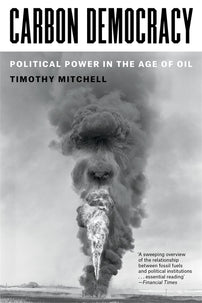A System of Sabotage
The new oil companies of the late 19th century found themselves competing across countries and continents, and had to look to ‘methods of sabotage’ to solve the problem.

The fluidity of oil and its relative ease of distribution presented those who controlled oil resources and their distribution networks with a new problem. In both the coal and the oil industries, producers always sought to avoid competition. Competing with rival firms over prices or market share destroyed profits and threatened a company with ruin. In the case of coal, the high cost of transporting supplies across oceans ensured that producers faced competition only within their own region. They avoided competition either by forming cartels, as in France, Germany and the United States, or by creating organisations to regulate prices and production, such as the postwar European Coal and Steel Community. In Britain, producers were ruined by competition, and in 1946 were taken over by the state.
Oil companies faced a much larger difficulty in avoiding competition. With the advent of the bulk oil tanker in the 1890s, it was no longer enough to control production and distribution in only one region. Since oil could travel easily between continents, petroleum companies were always vulnerable to the arrival of cheaper oil from elsewhere. This vulnerability, seldom recognised in accounts of the oil industry, created another set of limits to the democratising potential of petroleum.
The solutions that oil companies developed to this problem might be called a method of sabotage. In the coal age, workers had discovered the power that could be built from the ability to interrupt, restrict or slow down the supply of energy. The challenge facing large oil companies was to do something similar: to introduce small delays, interruptions and controls that, by limiting the flow of energy, would enhance their control. Émile Pouget’s pamphlet of 1909 on sabotage had concluded by suggesting that the capitalist class were perhaps the real saboteurs. A decade later, following the publication of an English translation of the pamphlet in Chicago, the American economist Thorstein Veblen developed this idea. Large business corporations, Veblen wrote, depended for their profits on a form of sabotage. Their goal was not to maximise production, but to raise prices by restricting output to ensure a shortage.
The ‘pettifogging tactics of Standard Oil’, for example, demonstrated how profits far exceeding the earning capacity of invested assets flowed from the ‘power of inhibition’ exercised by large business. This ‘capitalisation of inefficiency’ was especially profitable with a commodity such as oil, which was relatively cheap to produce but becoming so vital to industrialised society that great profits could be made if the supply was restricted. The goal of oil companies was to place themselves in control of the conduits, processing points and bottlenecks through which oil had to flow, to restrict the development of rival channels, beginning with oil wells themselves, and to use this command of obligatory passage points to convert the flow of oil into profits.
The two world wars of the twentieth century helped restrict the supply and movement of oil, but between the wars both domestic firms in the United States, where most world oil was then produced, and the handful of oil companies seeking to control international trade, needed a new set of mechanisms to limit the production and distribution of energy. The devices they developed included government quotas and price controls in the United States, cartel arrangements to govern the worldwide distribution and marketing of oil, consortium agreements to slow the development of new oil discoveries in the Middle East, and political agencies to manage the threat of those in the Middle East and elsewhere who opposed the oil companies’ system of sabotage.
These controls shaped the development of the transnational oil corporation, which emerged as the leading long-distance machinery for maintaining limits to the supply of oil. One could think of this development as the formation of what has been called a ‘technological zone’ – a set of coordinated but widely dispersed regulations, calculative arrangements, infrastructures and technical procedures that render certain objects or flows governable.
— An edited excerpt from Carbon Democracy: Political Power in the Age of Oil by Timothy Mitchell.
[book-strip]
